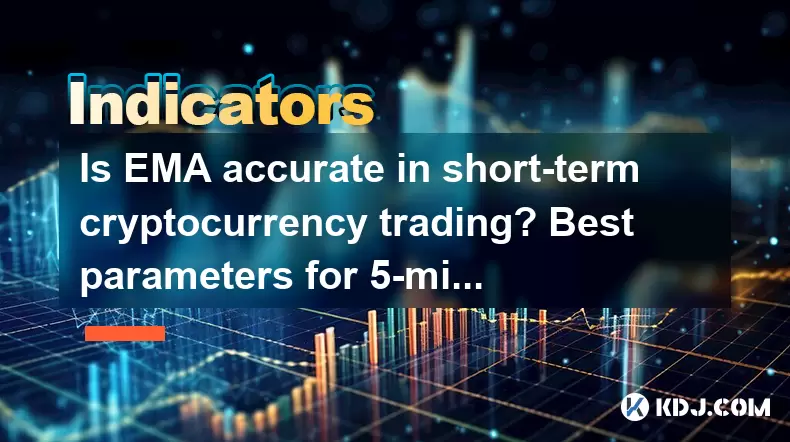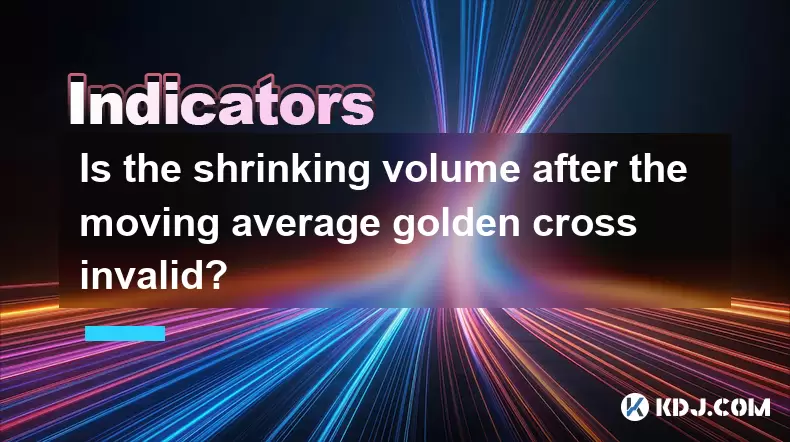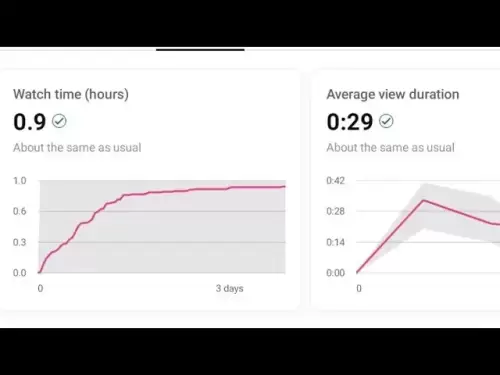-
 Bitcoin
Bitcoin $103,456.1111
0.49% -
 Ethereum
Ethereum $2,414.9631
0.02% -
 Tether USDt
Tether USDt $1.0006
0.05% -
 XRP
XRP $2.1083
0.24% -
 BNB
BNB $634.8760
-0.76% -
 Solana
Solana $139.8437
1.94% -
 USDC
USDC $0.9998
-0.01% -
 TRON
TRON $0.2737
0.97% -
 Dogecoin
Dogecoin $0.1602
0.20% -
 Cardano
Cardano $0.5737
1.08% -
 Hyperliquid
Hyperliquid $32.9779
-2.54% -
 Bitcoin Cash
Bitcoin Cash $474.8886
-1.80% -
 Sui
Sui $2.6272
-1.99% -
 Chainlink
Chainlink $12.4878
0.14% -
 UNUS SED LEO
UNUS SED LEO $8.9234
0.35% -
 Stellar
Stellar $0.2411
-0.18% -
 Avalanche
Avalanche $17.0274
-0.70% -
 Toncoin
Toncoin $2.8936
-1.11% -
 Shiba Inu
Shiba Inu $0.0...01112
-0.58% -
 Litecoin
Litecoin $82.6982
1.33% -
 Hedera
Hedera $0.1423
-0.05% -
 Monero
Monero $314.8455
3.26% -
 Ethena USDe
Ethena USDe $1.0006
0.01% -
 Polkadot
Polkadot $3.4043
1.14% -
 Dai
Dai $0.9999
0.01% -
 Bitget Token
Bitget Token $4.2848
-0.13% -
 Uniswap
Uniswap $6.8748
-5.45% -
 Pepe
Pepe $0.0...09661
0.52% -
 Pi
Pi $0.5359
1.19% -
 Aave
Aave $242.9168
-1.03%
Is EMA accurate in short-term cryptocurrency trading? Best parameters for 5-minute chart
EMA can be accurate for short-term crypto trading on a 5-minute chart; optimal parameters include 9, 21, and 50 periods for trend identification and entry/exit points.
May 27, 2025 at 08:00 pm

Is EMA accurate in short-term cryptocurrency trading? Best parameters for 5-minute chart
The Exponential Moving Average (EMA) is a widely used technical indicator in cryptocurrency trading, particularly for short-term strategies. Traders often rely on EMA to identify trends, potential entry and exit points, and to gauge market momentum. When considering the accuracy of EMA in short-term trading, especially on a 5-minute chart, it's essential to understand its functionality, advantages, and the best parameters to set.
Understanding EMA and Its Application in Short-Term Trading
EMA is a type of moving average that places more weight on recent prices, making it more responsive to new information compared to the Simple Moving Average (SMA). This characteristic makes EMA particularly useful for short-term trading, where quick reactions to market changes are crucial. In the context of a 5-minute chart, traders use EMA to identify short-lived trends and potential reversal points.
For short-term trading, EMA can be accurate in identifying trends and momentum, but its effectiveness depends heavily on the chosen parameters and the trader's strategy. A well-optimized EMA setup can help traders make informed decisions based on the most recent price action, which is vital in the fast-paced world of cryptocurrency trading.
Best EMA Parameters for a 5-Minute Chart
Choosing the right EMA parameters for a 5-minute chart involves finding a balance between responsiveness and reliability. Commonly used EMA periods for short-term trading include the 9-period, 21-period, and 50-period EMAs. Each of these has its unique application in trading.
9-period EMA: This is highly responsive to price changes, making it suitable for identifying very short-term trends and potential entry or exit points. It's often used in conjunction with other indicators to confirm signals.
21-period EMA: This provides a slightly longer-term view than the 9-period EMA, offering a balance between responsiveness and smoothing out short-term fluctuations. It's useful for identifying medium-term trends within the short-term timeframe.
50-period EMA: This is less responsive but can help traders identify longer-term trends within the short-term chart. It's often used to confirm the direction of the trend established by shorter EMAs.
How to Set Up EMA on a 5-Minute Chart
Setting up EMA on a trading platform like TradingView or MetaTrader involves a few straightforward steps:
- Open your trading platform and select the cryptocurrency pair you wish to trade.
- Navigate to the indicators section and search for "Exponential Moving Average" or "EMA."
- Add the EMA indicator to your chart.
- Set the period to the desired value (e.g., 9, 21, or 50).
- Adjust the color and style of the EMA line for better visibility.
You can add multiple EMAs to the same chart by repeating these steps with different periods. This allows you to compare different EMAs and use them in combination for more robust trading signals.
Using EMA for Short-Term Trading Strategies
Traders often use EMAs in various ways to develop short-term trading strategies. Here are a few common approaches:
EMA Crossover Strategy: This involves using two EMAs with different periods (e.g., 9 and 21) to generate buy and sell signals. A buy signal occurs when the shorter EMA crosses above the longer EMA, indicating a potential uptrend. Conversely, a sell signal is generated when the shorter EMA crosses below the longer EMA, suggesting a downtrend.
EMA as Support and Resistance: Traders may use EMAs as dynamic support and resistance levels. When the price is above the EMA, it can act as a support level, and when the price is below the EMA, it can act as resistance. This can help traders identify potential reversal points.
Trend Confirmation: By using a longer-term EMA (e.g., 50-period) in conjunction with shorter-term EMAs, traders can confirm the overall trend direction. If the shorter-term EMAs are moving in the same direction as the longer-term EMA, it strengthens the trend signal.
Limitations and Considerations
While EMA can be a valuable tool for short-term trading, it's important to be aware of its limitations. EMAs are lagging indicators, meaning they are based on past price data and may not always predict future price movements accurately. Additionally, in highly volatile markets, EMAs can generate false signals, leading to potential losses.
To mitigate these risks, traders should use EMAs in conjunction with other technical indicators, such as the Relative Strength Index (RSI) or the Moving Average Convergence Divergence (MACD). Additionally, implementing proper risk management strategies, such as setting stop-loss orders, can help protect against adverse market movements.
Practical Example of Using EMA on a 5-Minute Chart
Let's consider a practical example of how a trader might use EMAs on a 5-minute chart for Bitcoin trading:
- Set up the chart: Add a 9-period EMA (blue) and a 21-period EMA (red) to a 5-minute Bitcoin/USD chart.
- Identify the trend: If the 9-period EMA is above the 21-period EMA and both are sloping upwards, it indicates an uptrend.
- Look for entry points: A potential buy signal occurs when the price dips to the 9-period EMA and bounces back up, suggesting that the uptrend is still intact.
- Set a stop-loss: Place a stop-loss order just below the 21-period EMA to limit potential losses if the trend reverses.
- Monitor the trade: Continue to monitor the EMAs for any signs of a trend reversal, such as the 9-period EMA crossing below the 21-period EMA.
By following these steps, traders can use EMAs to make informed trading decisions on a 5-minute chart, leveraging the indicator's ability to highlight short-term trends and potential entry and exit points.
Frequently Asked Questions
Q1: Can EMA be used effectively on other timeframes besides the 5-minute chart?
Yes, EMA can be used on various timeframes, including 1-minute, 15-minute, and hourly charts. The key is to adjust the EMA periods according to the timeframe. For example, on a 15-minute chart, you might use a 20-period and a 50-period EMA.
Q2: How can I combine EMA with other indicators for better trading signals?
Combining EMA with other indicators can enhance trading signals. For instance, using EMA alongside the RSI can help confirm overbought or oversold conditions. If the EMA indicates an uptrend and the RSI shows the market is not overbought, it could be a strong buy signal.
Q3: Are there any specific cryptocurrencies where EMA works better?
EMA can be applied to any cryptocurrency, but it may work better on more liquid assets like Bitcoin and Ethereum, where price movements are more predictable and less prone to manipulation.
Q4: How often should I adjust my EMA parameters?
EMA parameters should be adjusted based on market conditions and your trading strategy. In highly volatile markets, you might need to use shorter periods for quicker responses. Regular backtesting can help determine the most effective parameters for your trading style.
Disclaimer:info@kdj.com
The information provided is not trading advice. kdj.com does not assume any responsibility for any investments made based on the information provided in this article. Cryptocurrencies are highly volatile and it is highly recommended that you invest with caution after thorough research!
If you believe that the content used on this website infringes your copyright, please contact us immediately (info@kdj.com) and we will delete it promptly.
- Ruvi AI: The Audited Token Poised to Outshine Shiba Inu
- 2025-06-22 10:25:12
- Dypians, DeFi, and Sei Network: A Deep Dive into the Latest Trends
- 2025-06-22 10:25:12
- Hacken Security Breach Highlights Risks Across Ethereum and BSC
- 2025-06-22 08:25:12
- SHIB Price, Forecasts, Timelines: Will Shiba Inu Ever Reach the 'One-Cent Dream'?
- 2025-06-22 08:25:12
- Avalanche vs. Ruvi AI: Why Smart Money's on This Audited Token
- 2025-06-22 08:45:12
- Bitcoin Demand on Pause: What's Next for the Crypto King?
- 2025-06-22 08:45:12
Related knowledge

Does the second surge in the RSI overbought zone induce more?
Jun 22,2025 at 08:35am
Understanding the RSI Overbought ZoneThe Relative Strength Index (RSI) is a momentum oscillator commonly used in technical analysis to measure the speed and change of price movements. It ranges from 0 to 100, with values above 70 typically considered overbought and values below 30 considered oversold. When the RSI enters the overbought zone for the firs...

Does the sudden contraction of ATR indicate the end of the trend?
Jun 20,2025 at 11:14pm
Understanding ATR and Its Role in Technical AnalysisThe Average True Range (ATR) is a technical indicator used to measure market volatility. Developed by J. Welles Wilder, ATR calculates the average range of price movement over a specified period, typically 14 periods. It does not indicate direction—only volatility. Traders use ATR to gauge how much an ...

Is it invalid if the DMI crosses but the ADX does not expand?
Jun 21,2025 at 09:35am
Understanding the DMI and ADX RelationshipIn technical analysis, the Directional Movement Index (DMI) consists of two lines: +DI (Positive Directional Indicator) and -DI (Negative Directional Indicator). These indicators are used to determine the direction of a trend. When +DI crosses above -DI, it is often interpreted as a bullish signal, while the opp...

How to filter false signals when the SAR indicator frequently flips?
Jun 21,2025 at 08:43pm
Understanding the SAR Indicator and Its BehaviorThe SAR (Stop and Reverse) indicator is a popular technical analysis tool used in cryptocurrency trading to identify potential reversals in price movement. It appears as a series of dots placed either above or below the price chart, signaling bullish or bearish trends. When the dots are below the price, it...

Is the trend continuation when the Williams indicator is oversold but there is no rebound?
Jun 20,2025 at 11:42pm
Understanding the Williams %R IndicatorThe Williams %R indicator, also known as the Williams Percent Range, is a momentum oscillator used in technical analysis to identify overbought and oversold levels in price movements. It typically ranges from 0 to -100, where values above -20 are considered overbought and values below -80 are considered oversold. T...

Is the shrinking volume after the moving average golden cross invalid?
Jun 22,2025 at 10:42am
Understanding the Moving Average Golden Cross in CryptocurrencyIn the world of cryptocurrency trading, technical indicators play a crucial role in decision-making. One such indicator is the moving average golden cross, which occurs when a short-term moving average crosses above a long-term moving average, typically signaling a bullish trend. This event ...

Does the second surge in the RSI overbought zone induce more?
Jun 22,2025 at 08:35am
Understanding the RSI Overbought ZoneThe Relative Strength Index (RSI) is a momentum oscillator commonly used in technical analysis to measure the speed and change of price movements. It ranges from 0 to 100, with values above 70 typically considered overbought and values below 30 considered oversold. When the RSI enters the overbought zone for the firs...

Does the sudden contraction of ATR indicate the end of the trend?
Jun 20,2025 at 11:14pm
Understanding ATR and Its Role in Technical AnalysisThe Average True Range (ATR) is a technical indicator used to measure market volatility. Developed by J. Welles Wilder, ATR calculates the average range of price movement over a specified period, typically 14 periods. It does not indicate direction—only volatility. Traders use ATR to gauge how much an ...

Is it invalid if the DMI crosses but the ADX does not expand?
Jun 21,2025 at 09:35am
Understanding the DMI and ADX RelationshipIn technical analysis, the Directional Movement Index (DMI) consists of two lines: +DI (Positive Directional Indicator) and -DI (Negative Directional Indicator). These indicators are used to determine the direction of a trend. When +DI crosses above -DI, it is often interpreted as a bullish signal, while the opp...

How to filter false signals when the SAR indicator frequently flips?
Jun 21,2025 at 08:43pm
Understanding the SAR Indicator and Its BehaviorThe SAR (Stop and Reverse) indicator is a popular technical analysis tool used in cryptocurrency trading to identify potential reversals in price movement. It appears as a series of dots placed either above or below the price chart, signaling bullish or bearish trends. When the dots are below the price, it...

Is the trend continuation when the Williams indicator is oversold but there is no rebound?
Jun 20,2025 at 11:42pm
Understanding the Williams %R IndicatorThe Williams %R indicator, also known as the Williams Percent Range, is a momentum oscillator used in technical analysis to identify overbought and oversold levels in price movements. It typically ranges from 0 to -100, where values above -20 are considered overbought and values below -80 are considered oversold. T...

Is the shrinking volume after the moving average golden cross invalid?
Jun 22,2025 at 10:42am
Understanding the Moving Average Golden Cross in CryptocurrencyIn the world of cryptocurrency trading, technical indicators play a crucial role in decision-making. One such indicator is the moving average golden cross, which occurs when a short-term moving average crosses above a long-term moving average, typically signaling a bullish trend. This event ...
See all articles
























































































